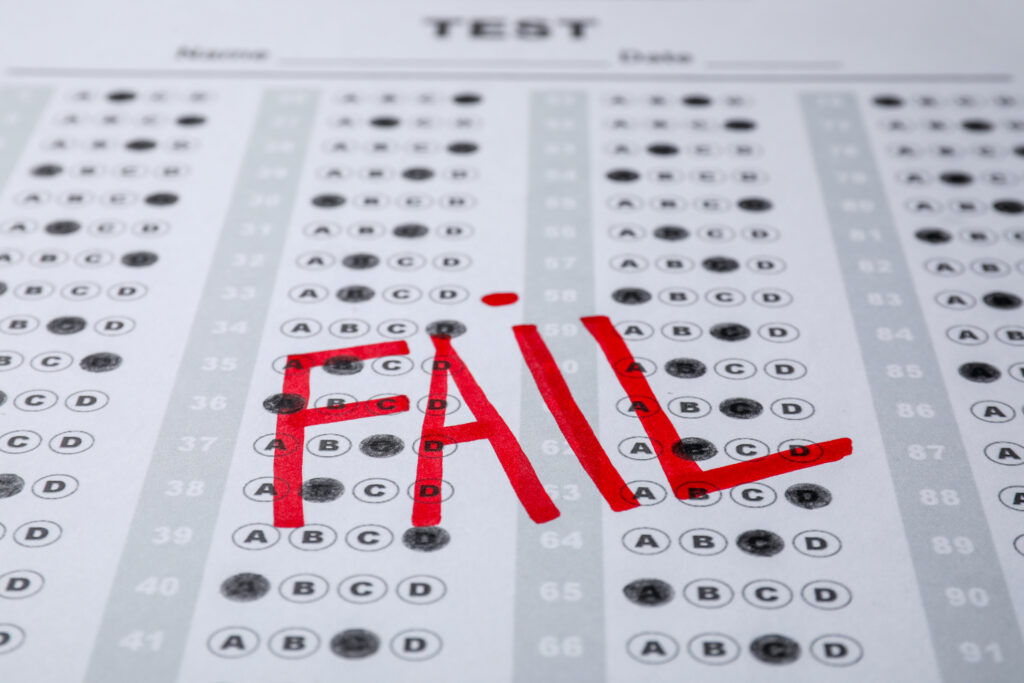U.S. students continue to perform poorly on standardized tests.
Every time National Assessment of Educational Progress (NAEP) scores are released, it’s bad news for American students. Headlines in newspapers and websites repeat the same sad story, and the results for the “nation’s report card” released on September 9 were typical. A Wall Street Journal headline stated, “Twelfth-Grade Math and Reading Scores in U.S. Hit New Low.” The online K-12 Dive reported, “5 takeaways from another round of disappointing NAEP results,” and the NH Journal noted, “Worst-Ever NAEP Test Results a Five Alarm Fire for Public Schools.”
Indeed, the results of the latest tests conducted in spring 2024 were dismal, showing that only 22% of high school seniors are proficient or higher in math, a decrease from 24% in 2019. Additionally, only 35% of high school seniors are proficient in reading—the lowest score since NAEP began in 1969 —down from 37% in 2019. Also, a record-high percentage scored at “below basic” levels in both math and reading compared to all previous assessments.
And just for good measure, the eighth-grade science test results were also released, and they were no better. The percentage of students scoring at the proficient level fell to 29%, down from 33%, and the average score returned to levels last seen in 2009, when a new version of the test was introduced.
Performance declined in all three science categories—physical, life, and earth and space sciences. Fewer than half of students can identify the main component of living cells, compared to 55% in 2019, and the percentage of students who can identify a characteristic of mammals dropped from 72% to 68%.
It’s not just the decline in skills that is concerning. The percentage of students who say they enjoy science activities fell from 52% to 42%.
Not surprisingly, students’ confidence in the subject has also worsened, with 28% saying they “definitely can do various science-related activities,” down from 34%.
The poor outcome aligns with the 4th- and 8th-grade reading and math scores, which were reported earlier this year. The results from those tests, administered in 2024, were announced in January and showed that 4th-graders continue to fall behind, with reading scores slightly lower, on average, than in 2022 and significantly lower than in 2019. Currently, only about a third of 4th- and 8th-grade students are proficient in reading and math.
Finally, the 2022 NAEP U.S. history and civics test results were just as alarming. The data reveal that only 13% of eighth graders meet proficiency standards for U.S. history, meaning they can “explain major themes, periods, events, people, ideas, and turning points in the country’s history.” Additionally, about 20% of students scored at or above the proficient level in civics. Both scores are the lowest ever recorded on these tests.
The education establishment is clueless about how to change course. Rick Hess, director of education policy studies at the American Enterprise Institute, writes that high school principals’ response to the problem was tepid. After the latest test scores were revealed, the National Association of Secondary School Principals asserted that “policymakers must listen to school leaders and students and make real investments in mental health, staffing, and academic resources so every learner has the opportunity to thrive.”
What should the nation’s high school principals have said about the NAEP results? Something that doesn’t downplay our current crisis, shift focus to mental health, or call for more resources.
To continue reading please visit ForKids&Country.org





